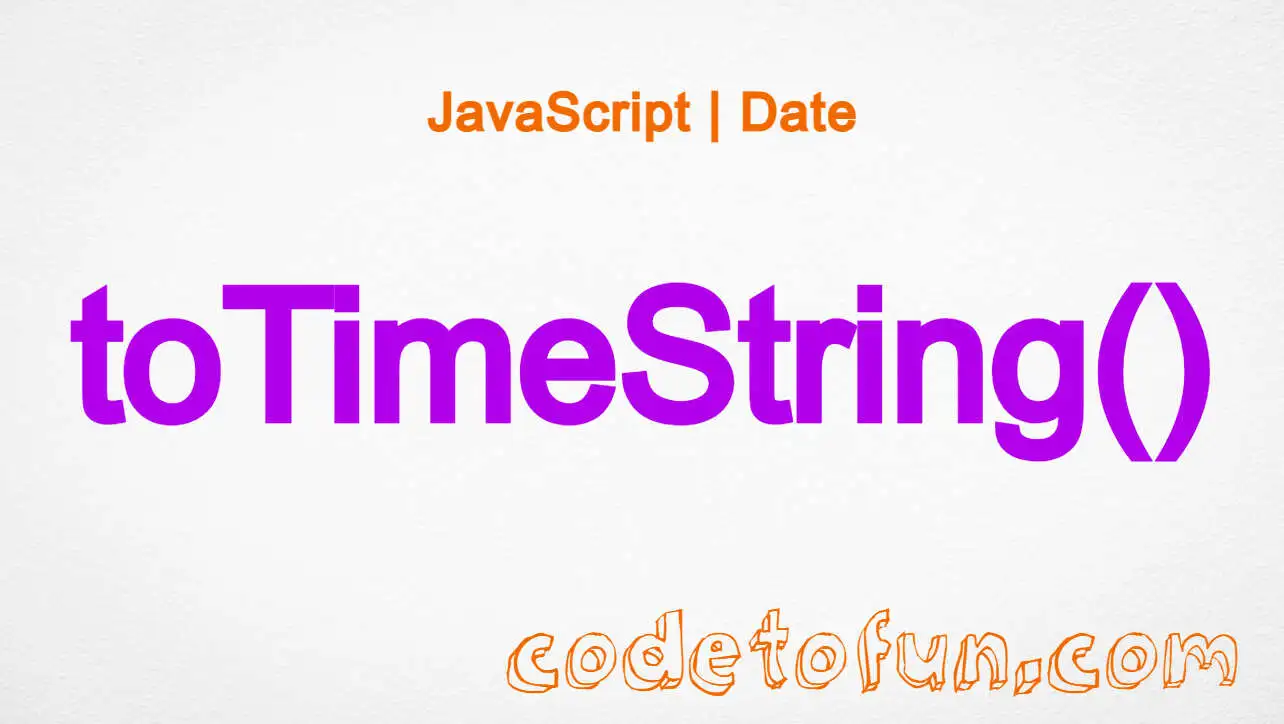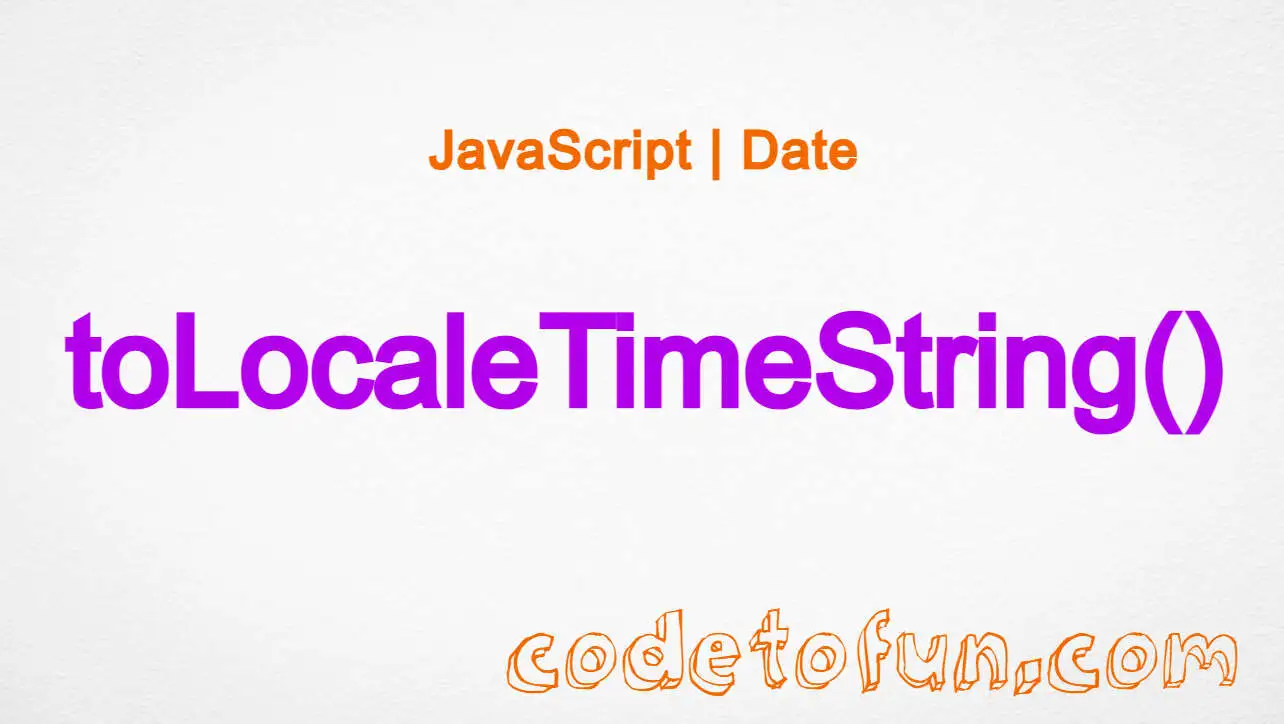
JS Date Methods
JavaScript Date toLocaleTimeString() Method

Photo Credit to CodeToFun
🙋 Introduction
Working with dates in JavaScript is a common requirement, and the toLocaleTimeString() method provides a powerful tool for formatting time according to the user's locale.
In this guide, we'll explore the toLocaleTimeString() method, understand its syntax, delve into best practices, and discover practical use cases.
🧠 Understanding toLocaleTimeString() Method
The toLocaleTimeString() method is part of the JavaScript Date object and is used to convert the time portion of a Date object into a string using the user's locale and formatting options.
💡 Syntax
The syntax for the toLocaleTimeString() method is straightforward:
dateObj.toLocaleTimeString([locales[, options]]);- dateObj: The Date object for which you want to obtain the local time string.
- locales (Optional): A string with a BCP 47 language tag or an array of such strings that represent the locale(s) you want to use.
- options (Optional): An object with formatting options, such as timeZone, hour12, etc.
📝 Example
Let's explore a basic example of using toLocaleTimeString():
// Create a Date object for the current time
const currentTime = new Date();
// Get the local time string
const localTimeString = currentTime.toLocaleTimeString();
console.log(`Local Time: ${localTimeString}`);This example creates a Date object representing the current time and uses toLocaleTimeString() to obtain the local time string.
🏆 Best Practices
When working with the toLocaleTimeString() method, consider the following best practices:
Locale Sensitivity:
Be aware that the output of
toLocaleTimeString()is dependent on the user's locale. Always provide the locales parameter to ensure accurate formatting.example.jsCopiedconst localTimeString = currentTime.toLocaleTimeString('en-US');Handling Options:
Familiarize yourself with the available options to customize the output according to specific requirements.
example.jsCopiedconst options = { timeZone: 'UTC', hour12: false }; const localTimeString = currentTime.toLocaleTimeString('en-US', options);
📚 Use Cases
Displaying Localized Time:
The primary use case for
toLocaleTimeString()is displaying the local time in a format that aligns with the user's language and region settings:example.jsCopiedconst localTimeString = currentTime.toLocaleTimeString('en-US'); console.log(`Local Time: ${localTimeString}`);Customizing Time Formatting:
Use the options parameter to customize the time formatting, such as using a 24-hour clock or specifying a different time zone:
example.jsCopiedconst options = { timeZone: 'Europe/London', hour12: false }; const londonTime = currentTime.toLocaleTimeString('en-GB', options); console.log(`London Time: ${londonTime}`);
🎉 Conclusion
The toLocaleTimeString() method empowers JavaScript developers to seamlessly incorporate localized time formatting into their applications.
By adhering to best practices and exploring diverse use cases, you can harness the full potential of the toLocaleTimeString() method in your JavaScript projects.
👨💻 Join our Community:
Author

For over eight years, I worked as a full-stack web developer. Now, I have chosen my profession as a full-time blogger at codetofun.com.
Buy me a coffee to make codetofun.com free for everyone.
Buy me a Coffee












If you have any doubts regarding this article (JavaScript Date toLocaleTimeString() Method), please comment here. I will help you immediately.